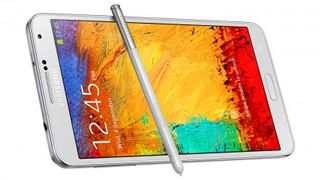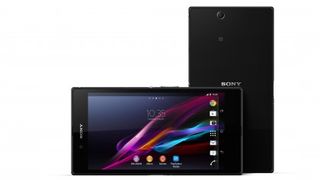Why you can trust TechRadar
The one thing the world isn't short of is enormous telephones. Samsung started it off with the mocked (at the time) Galaxy Note model, which, it turned out, was exactly what people wanted.
The Note series went on to become one of the best-selling smartphone models and helped drive today's relentless explosion in screen sizes.
Notable competition
The Galaxy Note 3 is slightly smaller than the N1 at, ahem, 'just' 5.7 inches, giving the Oppo N1 a little lead in terms of sheer screen size.
Both the Galaxy Note 3 and the Oppo N1 share a novelty input system, with the Note 3 having its S Pen and the N1 having the backside touchpad.
I don't really like the way smartphone makers are inventing solutions to problems that don't exist, simply so they've got a thing to boast about on their tech spec sheets.

That's about all these two phones have in common though, as Samsung's creaking TouchWiz interface goes down a whole different road to the simple, stock Android inspired ColorOS found on the Oppo N1.
The N1's a pretty simple affair with modest extended features based around gesture and motion input, while Samsung's Note 3 is heaving with bespoke software, stylus tools and more.
Both are big, both are very powerful and good at running Android. I'd go for the Oppo, if only because TouchWiz is starting to look a bit grey and bland these days.
Z-list
Sony's most recent entry in the big phone world is the Xperia Z Ultra, a huge 6.4-inch phone that's definitely able to take on the role of bedside tablet as well as daytime mobile phone.
Despite launching in late 2013 the Z Ultra still costs a lot more than the Oppo N1, selling for around the £450 ($750, AU$833) mark online.
And that's a big weakness, as with a less impressive camera and smaller battery (3,050mAh) than the N1, the only thing the Z Ultra has in its favour is its larger display.

It's a lovely display, mind, managing the same 1080p output as the N1, so if you really need the extra half an inch for getting the best out of your media content it's a good main selling point.
But the Oppo's software has more in common with regular Android, the camera's vastly better, plus it's cheaper and more powerful. The N1 crushes the Z1 beneath its manly boots.
Huawei the lads
If your main criteria is price, Huawei's Ascend Mate is the Oppo N1's biggest competitor. The massive 6.1-inch phone can be bought for around £300 online, so you get a bigger display and a few quid left over to put toward the next financial quarter's luxury tech purchase.
That's about all the Ascend Mate has in its favour, though, with the Huawei phone offering a slow and often glitchy experience and Huawei's own quad-core chipset struggling to run Android as well as the N1's Snapdragon 600.

The Mate also comes with Huawei's take on Google's OS, and it's a much less impressive and comprehensive skin than that conjured up by Oppo.
The Oppo N1 is heavier than Huawei's tab/phone at 213g against the Mate's 198g, but the slimmer N1 tricks the brain into thinking it's less substantial and it's less angular, helping again to make it seem like less of a lump.

